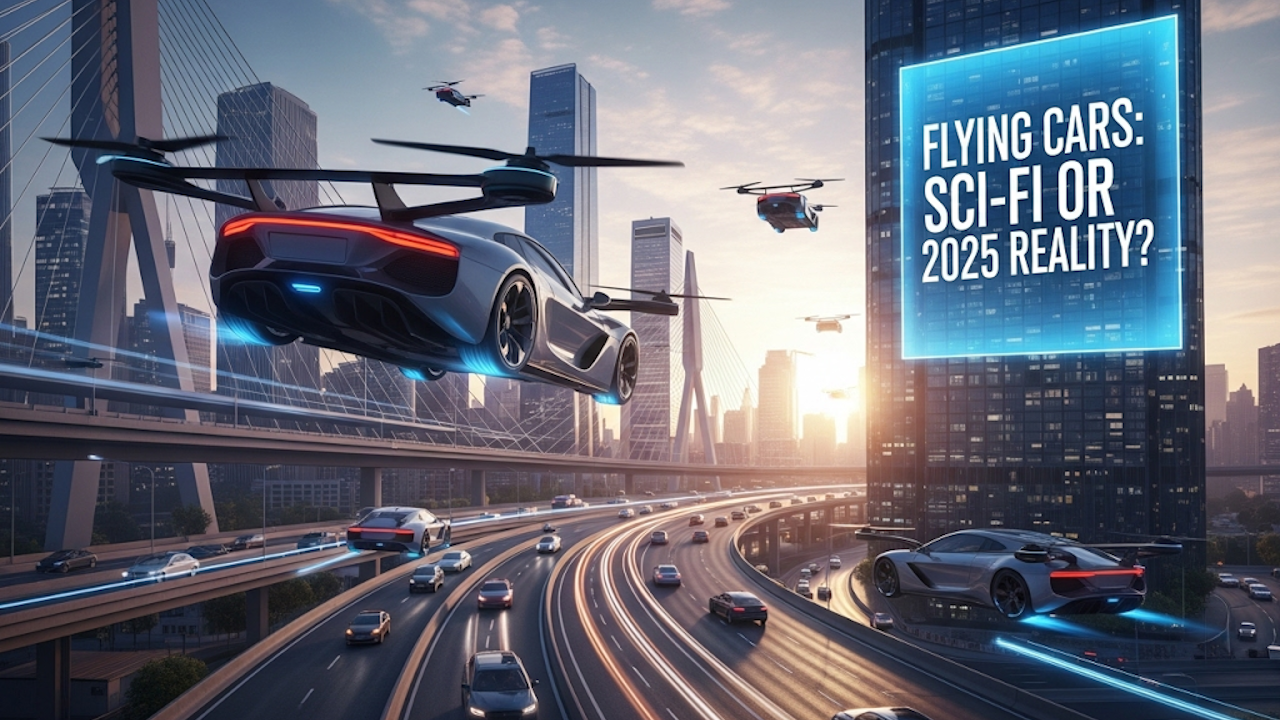For decades, flying cars have symbolized the future. Popularized by science fiction films, comic books, and imaginative futurists, the concept of vehicles that soar above congested streets once seemed far-fetched. From The Jetsons to Back to the Future, the idea of flying cars has long been tethered to fantasy. But as 2025 approaches, technological advancements and investments in the industry have brought the dream closer to reality. The question now is not whether flying cars are possible, but whether they are practical, safe, and ready for mainstream adoption.
The term “flying car” typically refers to a vehicle capable of both driving on roads and flying through the air. More accurately, many of the current prototypes are electric vertical takeoff and landing vehicles (eVTOLs), which operate more like large autonomous drones than traditional cars. They are being designed for short urban trips, intercity commutes, and emergency transport, offering the promise of bypassing ground traffic and reducing travel time.
Several companies are actively developing and testing flying cars. Big names like Joby Aviation, Archer Aviation, and Volocopter are leading the charge. Joby, for example, has already completed thousands of test flights with its eVTOL, which is designed to carry four passengers and a pilot. It can travel up to 150 miles on a single charge at speeds exceeding 200 miles per hour. Archer Aviation recently unveiled its aircraft, “Midnight,” which aims to provide a quiet, safe, and sustainable urban air mobility solution. Meanwhile, Volocopter is focusing on air taxis and already has plans to operate during the 2024 Paris Olympics.
Governments and regulatory bodies are beginning to take flying cars seriously. The Federal Aviation Administration (FAA) in the United States has already issued airworthiness certifications for several eVTOLs. In 2023, the FAA released a new blueprint for integrating air taxis into national airspace, signaling a shift from experimentation to implementation. Other countries, like the United Arab Emirates and Singapore, are also investing in infrastructure and regulatory frameworks for aerial mobility.
Despite this progress, significant challenges remain. The first is safety. Any flying vehicle must meet strict standards to ensure the safety of passengers and people on the ground. Traditional aircraft undergo years of testing and certification, and the same rigorous scrutiny applies to eVTOLs. Furthermore, the complexity of flying in crowded urban environments increases the need for reliable navigation systems and fail-safe mechanisms.
Infrastructure is another major hurdle. For flying cars to be useful, cities must develop takeoff and landing zones, often called “vertiports.” These need to be strategically located, accessible, and equipped with charging stations and air traffic management systems. Building such infrastructure requires collaboration between urban planners, private companies, and government agencies, and can be costly and time-consuming.
Cost and accessibility also raise concerns. While eVTOLs may become a premium service initially, similar to how helicopters operate today, widespread adoption depends on affordability. Battery technology, manufacturing scale, and regulatory streamlining will all influence pricing. Without affordability, flying cars risk becoming a luxury reserved for the wealthy, rather than a transformative tool for everyday commuters.
Noise and environmental impact present additional considerations. Many eVTOL developers emphasize their vehicles are significantly quieter than helicopters and more environmentally friendly, given their electric powertrains. However, scaling operations to thousands of daily flights could still create noise pollution and raise concerns among residents. Maintaining low emissions and sound levels will be key to gaining public support.
There’s also the matter of public perception and trust. People may hesitate to board a vehicle that looks more like a drone than a car, especially in the early days of deployment. Trust will depend on the reliability of the vehicles, the professionalism of operators, and successful public demonstrations. Much like the early days of commercial aviation, it may take time for society to accept and embrace flying cars.
In light of these challenges, it is unlikely that we will see widespread use of personal flying cars in 2025. However, limited applications such as air taxis and short-range cargo transport are already on the horizon. Companies like Amazon and UPS are testing drone deliveries, and some of the same technologies apply to passenger eVTOLs. These use cases will likely be the stepping stones that pave the way for broader adoption.
Looking forward, the integration of artificial intelligence, improved battery efficiency, and real-time data systems will continue to enhance the viability of flying cars. Urban air mobility could become a normal part of city life within the next decade. While 2025 may not bring the fully realized vision of flying cars zipping between skyscrapers during rush hour, it will mark a significant step toward that reality.
In conclusion, flying cars are no longer just the stuff of science fiction. Thanks to advancements in electric propulsion, autonomous technology, and aviation regulation, the dream is edging closer to reality. Although widespread adoption will take time, the progress made so far suggests that the sky is no longer the limit. By 2025, flying cars may not dominate city skylines, but their presence will be undeniable, signaling the dawn of a new era in transportation.

